
Concept explainers
a.
To Determine: The interval in which the function is increasing or decreasing.
The function is increasing on the interval of (−∞,∞) .
Given information:
q(x)=ex+2
Graph:
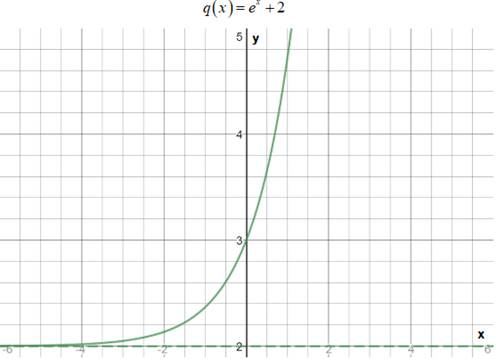
From the graph, it can be seen that the function is increasing throughout its entire domain, which is (−∞,∞) .
b.
To Determine: The function is odd, even or neither.
The function is neither even nor odd.
Given information:
q(x)=ex+2
Calculation:
A function is even if f(−x)=f(x)
Check if f(−x)=f(x) :
e−x+2≠ex+2
Since e−x+2≠ex+2 , the function is not even.
A function is odd if f(−x)=−f(x)
Multiply −1 by ex+2 :
−f(x)=−(ex+2)
Since −(ex+2)≠ex+2−ex−2≠ex+2 , the function is not odd.
So, the function is neither even nor odd.
c.
To Determine: The extrema of the function, if any.
There are no extrema points.
Given information:
q(x)=ex+2
Calculation:
Find the first derivative of the function.
ex
Differentiate using the Exponential Rule which states that ddx[ax] is axln(a) where a=e .
f′′(x)=ex
To find the local maximum and minimum values of the function, set the derivative equal to 0 and solve:
ex=0
Since there is no value of x that makes the first derivative equal to 0 , there are no local extrema.
Thus, there is no extrema for the function q(x)=ex+2 .
d.
To Determine: The graph of the function related to a graph of one of the twelve basic functions.
The graph is related to exponential function.
Given information:
q(x)=ex+2
Calculation:
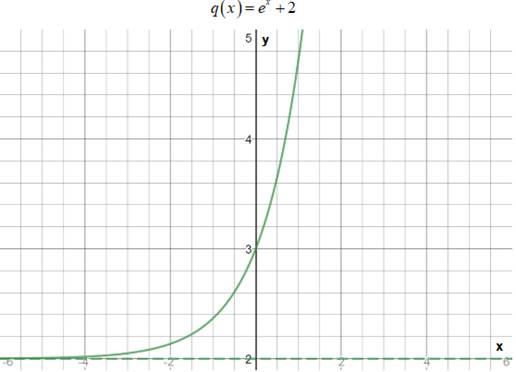
From the above graph, it can be seen that the function q(x)=ex+2 is a exponential function since, it shifted 2 units up.
Chapter 1 Solutions
PRECALCULUS:...COMMON CORE ED.-W/ACCESS
- quick solve thisarrow_forwardquick solve thisarrow_forwardThis table displays the current in equal intervals. Time t/ms 05 10 15 20 25 30 Current i/A 0 4.8 9.1 12.7 8.8 3.5 0 The formula for the charge as follows: 30x10-3 q 0 i dt Use formula to solve the current at 30ms using both the trapezoidal rule and Simpson's rule showing all steps and workingarrow_forward
 Calculus: Early TranscendentalsCalculusISBN:9781285741550Author:James StewartPublisher:Cengage Learning
Calculus: Early TranscendentalsCalculusISBN:9781285741550Author:James StewartPublisher:Cengage Learning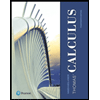 Thomas' Calculus (14th Edition)CalculusISBN:9780134438986Author:Joel R. Hass, Christopher E. Heil, Maurice D. WeirPublisher:PEARSON
Thomas' Calculus (14th Edition)CalculusISBN:9780134438986Author:Joel R. Hass, Christopher E. Heil, Maurice D. WeirPublisher:PEARSON Calculus: Early Transcendentals (3rd Edition)CalculusISBN:9780134763644Author:William L. Briggs, Lyle Cochran, Bernard Gillett, Eric SchulzPublisher:PEARSON
Calculus: Early Transcendentals (3rd Edition)CalculusISBN:9780134763644Author:William L. Briggs, Lyle Cochran, Bernard Gillett, Eric SchulzPublisher:PEARSON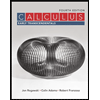 Calculus: Early TranscendentalsCalculusISBN:9781319050740Author:Jon Rogawski, Colin Adams, Robert FranzosaPublisher:W. H. Freeman
Calculus: Early TranscendentalsCalculusISBN:9781319050740Author:Jon Rogawski, Colin Adams, Robert FranzosaPublisher:W. H. Freeman
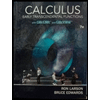 Calculus: Early Transcendental FunctionsCalculusISBN:9781337552516Author:Ron Larson, Bruce H. EdwardsPublisher:Cengage Learning
Calculus: Early Transcendental FunctionsCalculusISBN:9781337552516Author:Ron Larson, Bruce H. EdwardsPublisher:Cengage Learning





